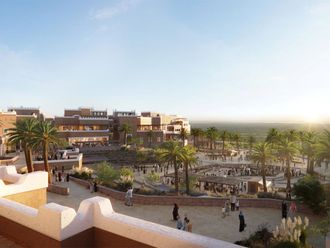Dubai: Significant additions to hotel supply in Dubai in 2016 coupled with slower demand pushed hotels’ profits down 6.8 per cent year-on-year, even as hoteliers managed to reduce their costs.
According to the latest report by hotels data provider HotStats, Dubai hoteliers worked hard to claw back profit levels in the second quarter of 2016 by reducing costs, with savings in labour (of 1.7 per cent) and overheads (of 2.8 per cent).
In the first half of the year, hotels in Dubai succumbed to the pressure of additional supply, during which period profit per room fell by 13.2 per cent. This was primarily due to declining levels of revenues per available room — falling 11.3 per cent.
By the fourth quarter of the year, however, hotels in Dubai started to claw back profits through cost reductions.
“Hoteliers in Dubai have faced a number of issues, which have negatively impacted top and bottom line performance in 2016, including significant additions to hotel supply, which included major projects, such as the 1,004-bedroom Westin Al Habtoor City and 828-bedroom Atana Tecom, as well as a migration to three-star hotel products and economic challenges led by the drop in oil prices,” the report stated.
While oil prices have been showing signs of relative recovery in the past few months, analysts expect further challenges for the tourism sector in 2017 on the back of strength in the US dollar (to which the UAE dirham is pegged).
Stable occupancy
Christopher Hewett, associate director at TRI Consulting, said he expected the currency’s strength to have an impact on the spending power of tourists, especially given that a lot of the UAE’s source markets are non-dollar economies.
“I think what you’ll see in 2017, in Dubai in particular, is occupancy levels will remain somewhat stable. But I think what we’ll likely see is average room rates continue to decline probably by six to seven per cent next year, and a lot of that will be driven by the stronger dollar,” he said.
Other analysts also said that while guest arrivals to the UAE may continue to grow, tourist spending may drop, meaning visitors will eye more affordable accommodation, dining, and retail brands during their visit.
Elsewhere in the GCC (Gulf Cooperation Council), hotels in Doha saw even stronger declines in performance indicators, with profit per room falling 23 per cent in 2016, representing a second consecutive year of significant profit declines for properties in the Qatari capital, according to the HotStats report.
Despite reducing labour and overhead costs on a per available room basis, the drop in revenue “far exceeded any cost savings”, and profit per room plummeted during the year, which was further to the 8.4 per cent decline in profit per room in Doha in 2015.












